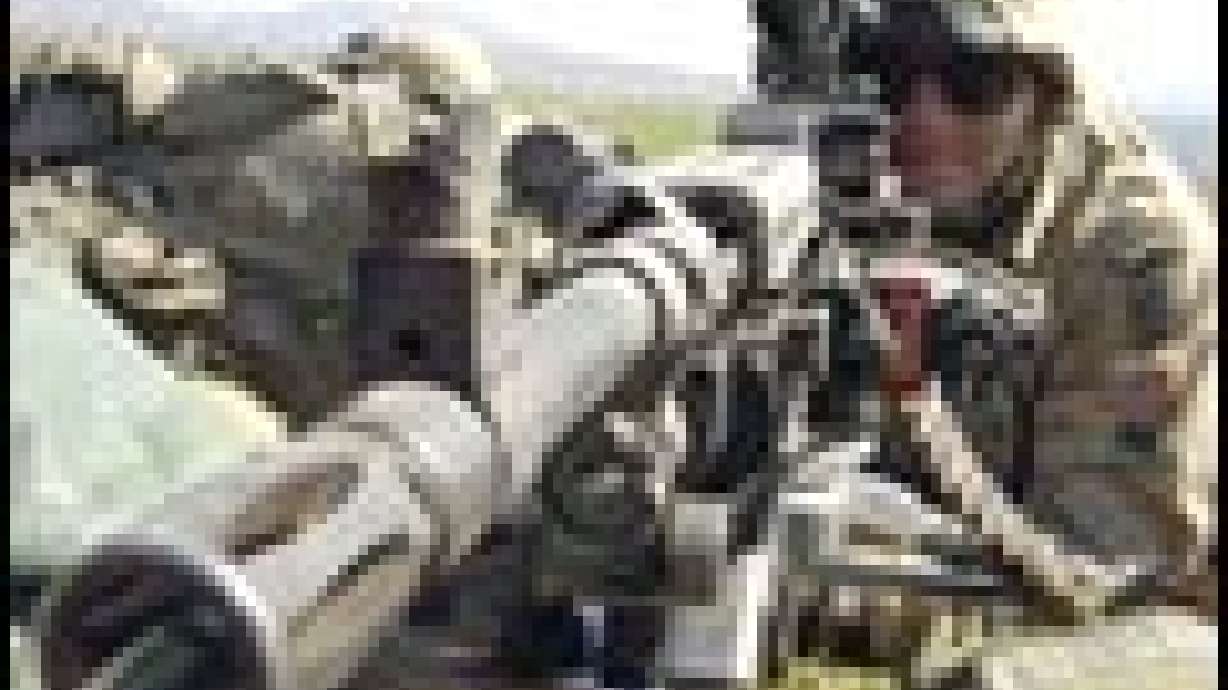Estimated read time: 4-5 minutes
This archived news story is available only for your personal, non-commercial use. Information in the story may be outdated or superseded by additional information. Reading or replaying the story in its archived form does not constitute a republication of the story.
WASHINGTON (AP) -- Large-scale combat in Iraq is finished, and the U.S. war commander is sending forces home, the Pentagon said Monday, but the troops remaining still face dangers.
"The major combat operations are over, because the major Iraqi (fighting) units on the ground cease to show coherence," said Maj. Gen. Stanley McChrystal, vice director of the Pentagon's Joint Staff.
Two of the five Navy aircraft carrier battle groups engaged in the war are heading home this week, and McChrystal said war commanders are reviewing the timetable for sending the Army's 1st Cavalry Division into Iraq. The Air Force has sent home the four B-2 stealth bombers that flew wartime missions, and some other Air Force strike aircraft also will be released, officials said.
Each aircraft carrier has about 80 planes aboard, including about 50 strike aircraft.
With little public notice, the last two American aircraft based at Incirlik, Turkey, flew home Saturday to Shaw Air Force Base, S.C., ending 12 years of enforcing a flight-interdiction zone over northern Iraq.
About 45 U.S. and British planes were based at Incirlik; they did not participate in the war against Iraq because Turkey would not permit it. With the fall of the Saddam Hussein regime, the need for "no-fly" zones over northern and southern Iraq had disappeared, officials said.
It was not immediately known whether the U.S. planes that enforced the southern "no-fly" zone would remain at bases in Saudi Arabia and Kuwait.
The first ship to leave the war zone was the dock landing ship USS Portland, part of an amphibious task force that carried 7,000 Marines to Kuwait in February. The Portland arrived at Little Creek, Va., on Friday.
At least two attack submarines also have returned from the war. They and a number of destroyers and cruisers launched more than 800 Tomahawk cruise missiles into Iraq from the Red Sea, the eastern Mediterranean Sea and the Persian Gulf. No Tomahawks have been launched for several days.
McChrystal said it is too soon to say the war is over. Allied troops on the ground still face dangers from renegade paramilitaries, remnants of the Republic Guard and terrorists, he said.
Remaining missions include consolidating U.S. control of some cities and searching for illegal weapons.
"I think we will move into a phase where it is smaller, albeit sharp, fights," McChrystal said.
The Pentagon said the number of Americans killed in the war stood at 118, and four are missing in action.
Other officials said the aircraft carrier USS Kitty Hawk will leave the Gulf around the middle of this week to return to its homeport at Yokosuka, Japan, and the USS Constellation will leave for San Diego shortly afterward. The only carrier to remain in the Gulf will be the USS Nimitz.
The departures of the Kitty Hawk and the Constellation reflect a winding down of the air campaign.
McChrystal said the number of air missions flown over Iraq, including refueling and other support missions, has dropped to 700-800 per day. That's half as many as just a few days ago. Fewer than 200 precision-guided bombs were dropped Monday, he said. That compared with 1,000 or more per day earlier.
Monday was the last day that aircraft from all five aircraft carriers in the region flew missions over Iraq, he said. Besides the three carriers in the Gulf, the USS Harry S. Truman and the USS Theodore Roosevelt are operating in the eastern Mediterranean. Officials said over the weekend that either the Roosevelt or the Truman probably would be sent home soon.
The Pentagon still is sending ground forces to Kuwait and Iraq.
Soldiers from the 4th Infantry Division, recently arrived in Kuwait from Fort Hood, Texas, crossed the border into Iraq on Monday. First in were two convoys of about 500 tanks and other vehicles.
Plans call for the 4th Infantry to move north of Baghdad, but probably not farther north than Kirkuk, a military official said Monday. The 3rd Armored Cavalry Regiment will provide a screening force for the division as it moves north, the official said, speaking on condition of anonymity.
The Army's 1st Armored Division is moving its equipment to ports for shipment to the Gulf region, and its troops will follow by air in a couple of weeks, a division spokesman, Maj. Scott Slaten, said Monday. The division is sending two armored brigades and one aviation brigade from bases in Germany, and one brigade is going from its base at Fort Riley, Kan., Slaten said.
It is not clear whether one of the Army divisions already in Iraq will leave after the 1st Armored gets there.
As combat ends, the hunt for chemical and biological weapons or nuclear materials is rising on the priority list for American troops. There are more potential nuclear, biological or chemical weapons sites in Iraq than U.S. military teams to check them, Pentagon officials said.
McChrystal said none of the suspicious materials removed from the battlefield so far, including containers of suspected chemical agents, has yielded positive test results. Testing continues.
(Copyright 2003 by The Associated Press. All Rights Reserved.)








